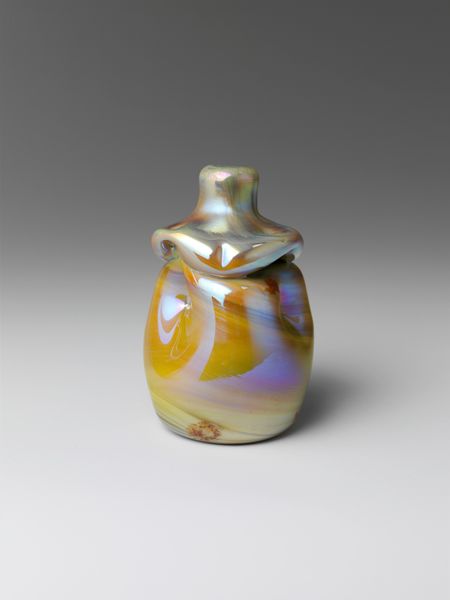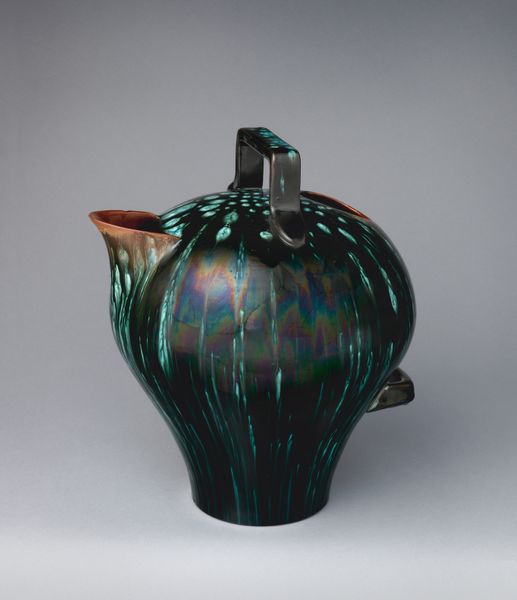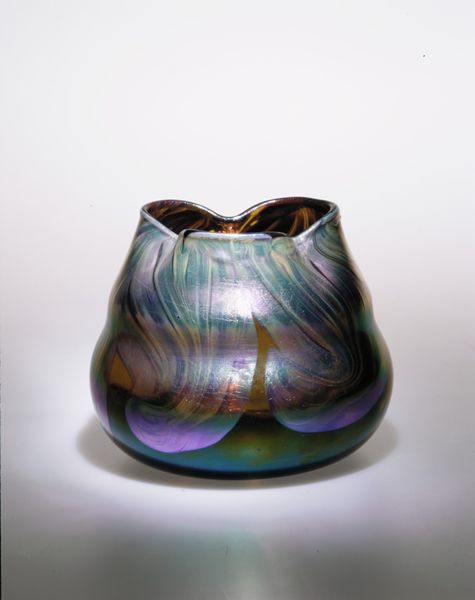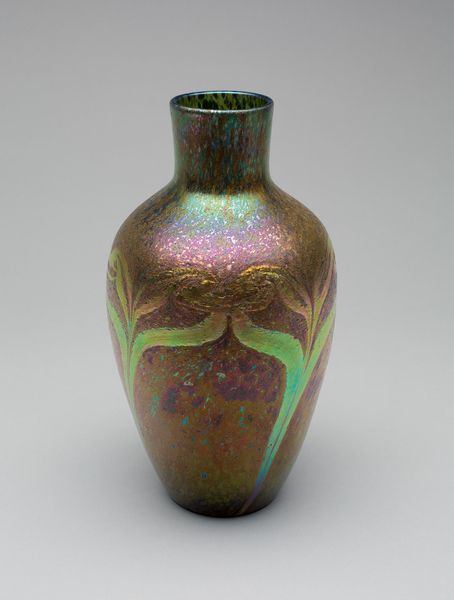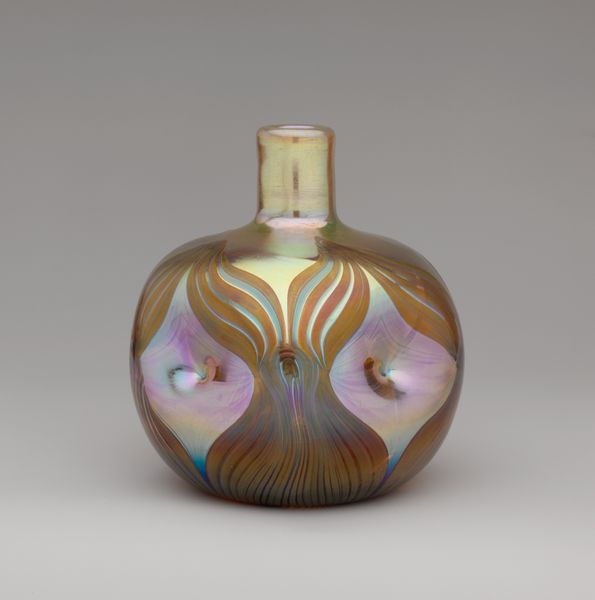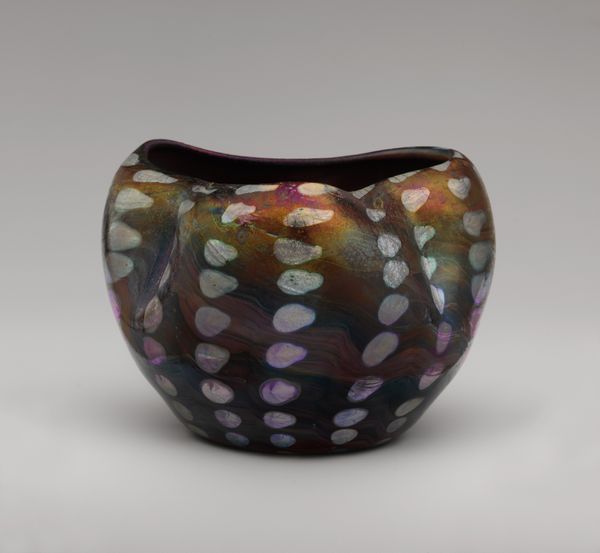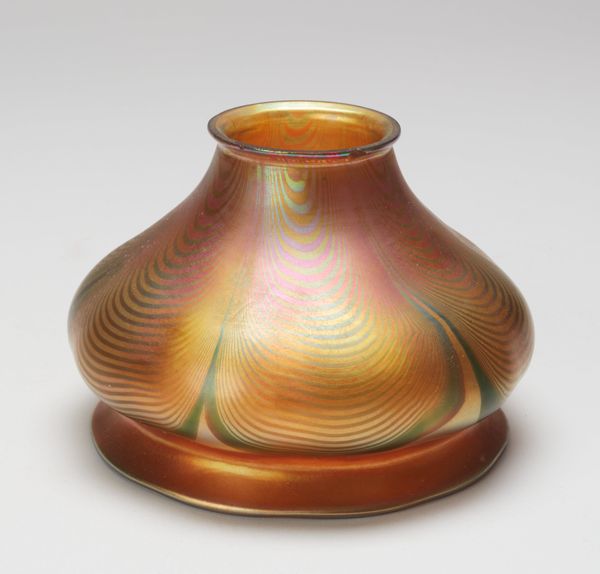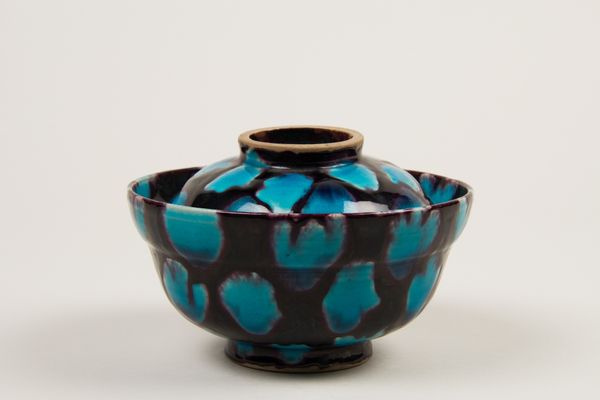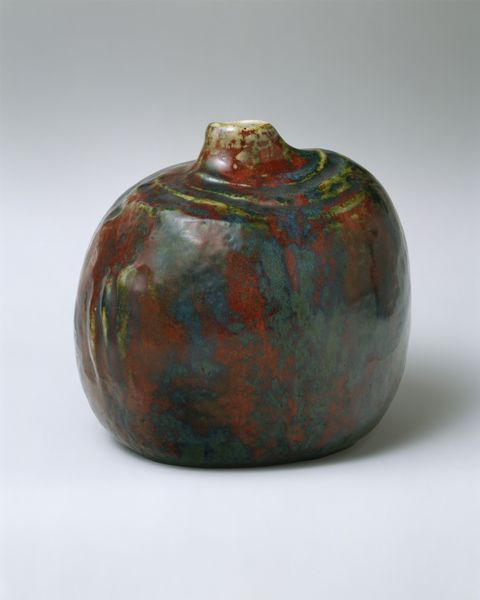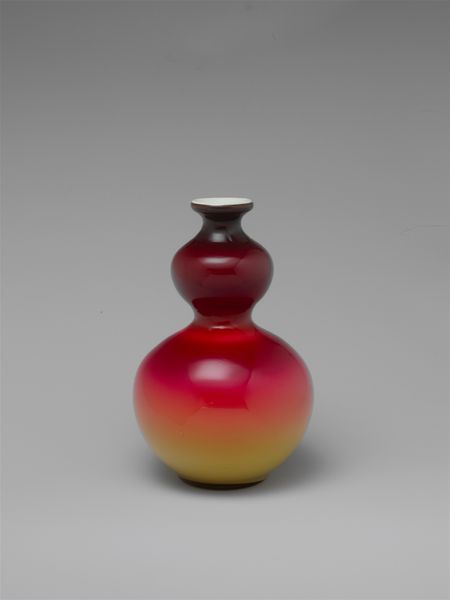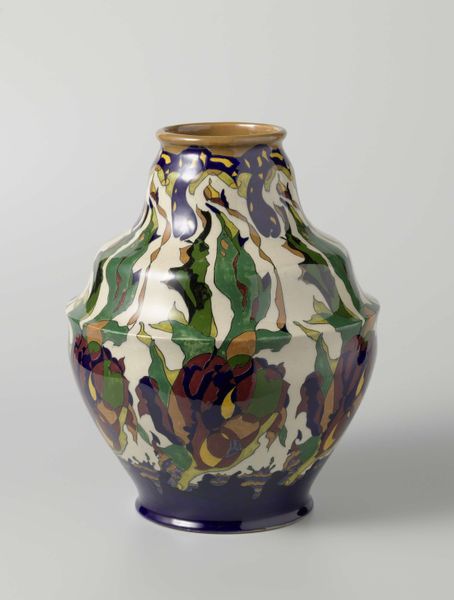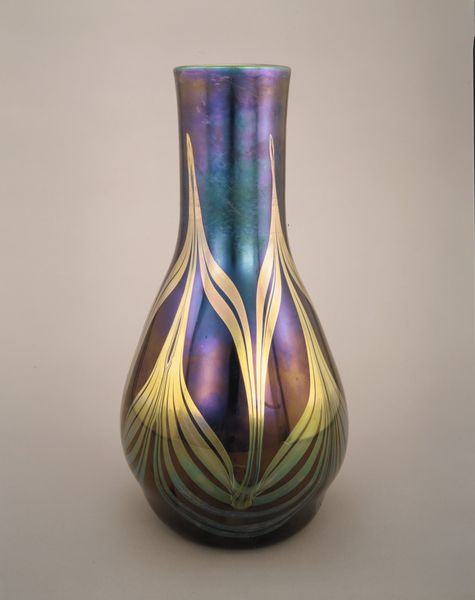
glass
#
art-nouveau
#
glass
#
decorative-art
Dimensions: 2 7/8 x 3 1/8 in. (7.3 cm)
Copyright: Public Domain
Editor: So, this iridescent glass "Vase" by Louis C. Tiffany, made between 1893 and 1896. It’s giving off kind of an ethereal, almost dreamlike quality, with all the shimmering colours. As a decorative object, it's lovely, but I wonder, what story does it tell about the era it comes from? Curator: Excellent observation. Tiffany’s glass perfectly embodies the Art Nouveau movement, a rebellion against industrial mass production. What statements do you think these pieces made at the time? Editor: Hmmm, so this wasn’t just a pretty object, it was also a social commentary? Was it challenging established norms in some way? Curator: Precisely! It’s more than just a beautiful object; it's an embrace of craftsmanship, of nature-inspired forms and intricate detail at a time of rising urbanisation. The emphasis on unique, handcrafted items like this vase suggested that luxury and artistry should be integrated into everyday life, didn't it? It almost romanticises the natural world. How might that connect with social concerns of the period? Editor: I suppose as cities grew, there was an increasing longing for a connection with nature? And pieces like this vase, accessible to a burgeoning middle class through department stores, democratised that experience? Curator: Precisely. Tiffany strategically used these venues. This piece shows not just artistic skill but shrewd social awareness. It’s not only decorative but very much speaks of the public role of art. It captures anxieties and aspirations of its era. Editor: I had no idea it was so layered! I’ll definitely look at Art Nouveau with new eyes now. Curator: Indeed! Context is everything. These objects reflect and influence the world around them, not just fill a display case.
Comments
No comments
Be the first to comment and join the conversation on the ultimate creative platform.
